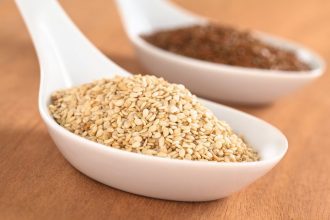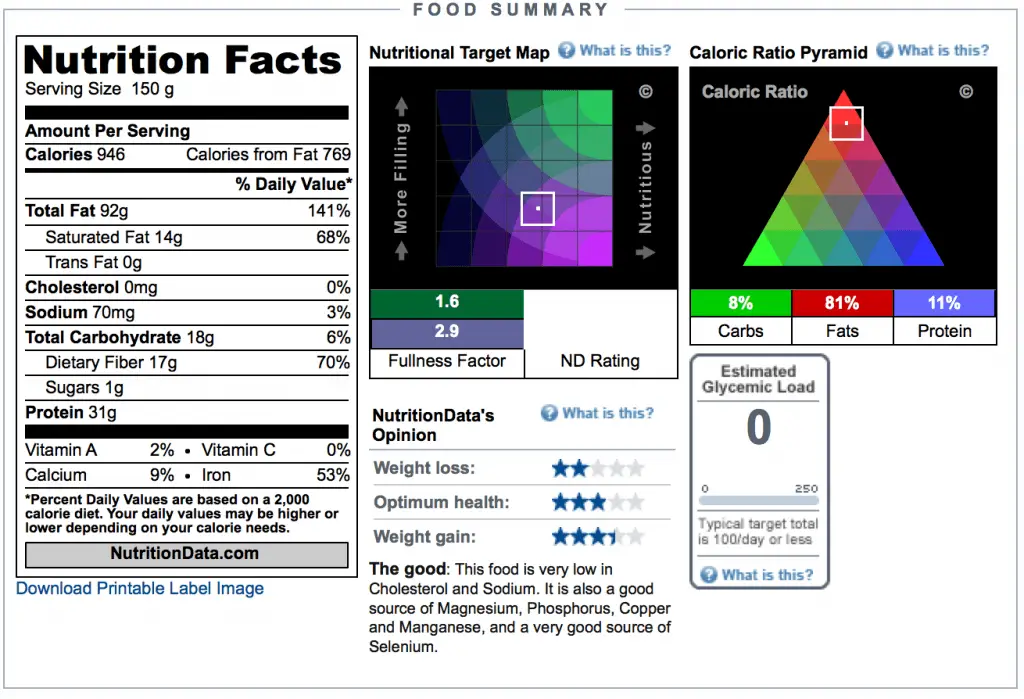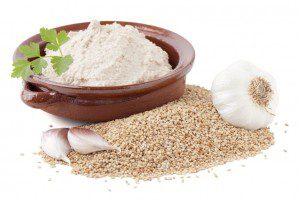 By Sayer Ji
By Sayer Ji
Contributing writer for Wake Up World
Sesame May Eclipse Flaxseed as the Ultimate Healing Seed
Whereas flaxseed has been enjoying its “superstar” status in the nutritional world for quite some time, sesame is still rarely appreciated for its true healing power. All that is about to change…
The health benefits of flaxseeds have received a disproportionate amount of attention vis-à-vis other edible seeds in recent years, largely because they are one of the best sources of vegetarian omega-3 fatty acids known, but also because they are believed to contain the highest concentration of a class of beneficial phytocompounds known as lignans. But what does the science actually say? While it probably shouldn’t be a competition, flaxseed literally lost a “peeing contest” with sesame seeds, the latter of which were found through urinary excretion biomarkers to produce even higher levels of the two most important mammalian lignans, namely, enterolactone (EL) and enterodiol (ED).
[pro_ad_display_adzone id=”110028″]
Many of our regular readers know that flaxseed is one of the most powerful healing foods in the human diet today. After all, we report on its amazing health benefits quite often. Indeed, the continual flow of new research on its health benefits is really quite amazing. There are now over 200 studies published each year on MEDLINE on their actual or potential health value, and over 3,000 studies have already been published on the topic.
Today, the GreenMedInfo.com database contains research on flaxseed’s value in over 70 diseases. To get a meta-view of that research, you can read our recently published article on the topic titled, “70 Reasons To Eat More Flaxseed.”
Most notably perhaps is the fact that flaxseed is one of only a few foods that has been clinically demonstrated to shrink breast tumors, as well as reduce breast cancer specific mortality. This is all the more amazing when you consider that every year millions of dollars are raised through cause-marketing campaigns to “find a cure” for breast cancer. And yet, billions of dollars later, no pharmaceutical preventive solution exists. For a list of hundreds of natural substances studied to prevent breast cancer, go to the GreenMedInfo.com database on the topic: Breast Cancer prevention research.
Flaxseed’s unique benefits aside, there are other amazing seeds that have not received nearly as much attention by the research community or press, even though they deserve it. One such seed, worthy of the name “super food,” is sesame.
Why Is Flaxseed Considered Superior to Other Seeds?
Why has flaxseed received disproportionately more attention than most others? The primary reason is that two reports, one from 1991, titled, Mammalian lignan production from various foods, and another from 1998, titled, “Phytoestrogen content of foods,” found that flaxseed is the richest source of mammalian lignan precursors, with levels 100-800 times higher concentrations than any other plant food tested. This has lead to the oft-repeated claim that flaxseed’s lignan content makes it superior to all other plant foods, including sesame. This, however, is not true.
An important study on the topic, published in the journal Nutrition and Cancer in 2005 and titled, “Whole Sesame Seed Is as Rich a Source of Mammalian Lignan Precursors as Whole Flaxseed,” compared sesame seed with flaxseed in postmenopausal women.
Briefly, what makes flaxseed so therapeutic for hormone sensitive cancers like breast, ovary, and prostate cancer, is that it contains a type of polyphenolic phytocompound known as lignan, which is a co-passenger with fiber. Following consumption, a portion of these lignans are converted via gut microflora into metabolic byproducts known as “mammalian lignans,” namely, enterolactone (ED) and enterodiol (EL). These lignans have been studied to have anti-cancer properties, and are believed to interact selectively with estrogen receptors on cells, resulting in beneficial health effects.
In the 2005 study, researchers set out to determine the level at which these mammalian lignans are produced from precursors in foods bars containing 25 grams of unground flaxseed, sesame seed, or their combination.
The study was a randomized, crossover, wherein 16 healthy postmenopausal women supplemented their diets with the bars for 4 wk each separated by 4-wk washout periods, and urinary mammalian lignan excretion was measured at baseline and after 4 wk as a marker of mammalian lignan production.
The results of the study proved that sesame seed provides about an equally abundant source of lignan as flaxseed, as reflected by the urinary excretion of mammalin lignans. In fact, the authors noted that technically sesame contains more lignan than flaxseed:
“It was thus surprising that SB [sesame] consumption resulted in a greater, albeit not significantly greater, increase in urinary lignans than FB [flaxseed].”
The summarized their results:
This study demonstrated for the first time that, in postmenopausal women, 1) plant lignans in unground whole flaxseed, sesame seed, and their combination, in the bar formulation, are converted by the bacterial flora in the colon to mammalian lignans, as indicated by the significantly large increase in urinary excretion of ED and EL; 2) large amounts
of urinary ED and EL are produced from sesame seed-containing bars, as much as that produced with flaxseed, indicating the presence of large amounts of mammalian lignan pre cursors; and 3) sesame plant lignans are converted as well to another compound, which is excreted in the urine.”
Another interesting finding was that the combination of flaxseed and sesame was not superior, as would be expected, in producing mammalian lignans when compared to flaxseed or sesame alone:
When sesame seed was combined with flaxseed, the conversion of SECO and other precursors in flaxseed to ED and EL was lower than what was expected from the conversion seen with sesame seed or flaxseed alone.”
The researchers theorized that this may have resulted from phytocompounds in one seed suppressing the conversion of lignan to mammalian lignans in another.
Ultimately, the study proved something that has still not seeped into the popular consciousness, and which marketing copy and even professional educators have yet adjusted their data to accommodate, namely:
Because the mammalian lignan production with sesame seed, alone or in combination with flaxseed, was equivalent to that from flaxseed, sesame seed may be used as an alternative to flaxseed as a very rich source of mammalian lignan precursors. The large amount of mammalian lignans produced with sesame seed, reported for the first time here, suggests that they should also be examined for their potential role on some of the reported beneficial effects of sesame seed and its major lignans” [emphasis added]
[pro_ad_display_adzone id=”110030″]
The Power of Sesame Revealed
Now that we have established sesame on the same footing as flaxseed, both in terms of lignan content, and their convertibility to the mammalian lignans ED and EL, it will be helpful to look at a 2012 study, which also confirmed one dimension of their therapeutic effects to be equivalent. Published in the journal Nutrition and Cancer, and titled,”Comparative effects of sesame seed lignan and flaxseed lignan in reducing the growth of human breast tumors (MCF-7) at high levels of circulating estrogen in athymic mice,” researchers found that breast tumor prone mice fed for 8 weeks, either flaxseed lignan (SDG) or sesame lignan (SES), both resulted in the reduction of tumor cell proliferation and the reduction in tumor size by 23% compared to the control. The researchers found that sesame lignan was more effective than flaxseed lignan in reducing breast tumor growth. One explanation is that sesame lignan was found to be a better inducer of programmed cell death (apoptosis) in breast cancer cells than flaxseed lignan.
Hopefully, we have established that sesame not only contains at least as much beneficial lignan as flaxseed, but that research (albeit preliminary) also shows these sesame lignans are also powerful anti-cancer agents, and that we can expect many of the clinically confirmed health benefits attributed to flaxseed may also be attributable to sesame seeds.
Ultimately, however, this comparative approach may distract from the wealth of health benefits already identified for sesame and its components in the biomedical literature. Sesame, like flaxseed, is backed up by literally thousands of published studies. You can do a pubmed.gov search of the MEDLINE database and will find almost 3,000 studies available to look through. The GreenMedInfo.com database on sesame, in fact, lists 90 potential health benefits of this amazing seed, and features reports on human studies with very promising results. Here are a few worth perusing:
Over and over again, in the published research itself, we are finding that simple foods, many of which we have never paid much attention to, contain powerful, if not life-saving health benefits. Not only are we learning that Hippocrates was right when he said that “food is medicine,” but that even better, if we can start incorporating these powerful substances into our daily diet, in even small, culinary doses, not only will they nourish us deeply, but we won’t need to use heroic doses of spices or foods later on, after a serious illness has taken hold. In other words, food isn’t so much medicine, as that which prevents us ever needing medicine in the first place.
Nutritional Facts and How To Take Sesame
If you would like to learn more about the nutritional benefits of sesame, you can visit NutritionData.com’s in depth analysis. You will find there that sesame seed is actually a significant source of protein: about 20% by weight. It is also a rich source of plant-based calcium, providing 9% of the RDA, and which is far superior to the many inorganic forms of calcium that predominant out there because it is highly unlikely to contribute to soft tissue, or so-called ectopic calcification. It is also surprising to find that it is a significant source of iron, providing 53% of the RDA in a 150 gram serving (roughly 5 ounces).
Source: NutritionData.com sesame page
Sesame seeds rarely come up in typical Western dietary patterns, beyond its almost ornamental usage on hamburger buns. Some savor the taste of its roasted oil — a form which would not contain as much lignan (because it is a fiber co-passenger) and which would have far less antioxidant activity due to roasting. But have you ever considered adding it to your cereal, salads, or smoothies? It does not take much to benefit from this lignan content when used this way. Just a teaspoon a day is enough to have a significant impact.
Here are a few other ways to use sesame:
Sesame Milk Recipe
Ingredients:
- 1 cup of sesame seeds
- 2 cups of water
Directions:
- Soak 1 cup of sesame seeds in 2 cups of water overnight In the morning, blend the water and seeds until smooth.
- Chill and drink (to retain the fiber) or strain the mixture using a cheesecloth then serve.
Lemon-Tahini Salad Dressing
Ingredients:
- ¼ cup lemon juice
- 2 tablespoons water
- 2 tablespoons tahini
- 1 tsp honey
- 1 small clove garlic, minced
- Salt and pepper to taste
Directions:
- Whisk together and serve with greens, or drizzle over cooked or raw vegetables like green beans and broccoli.
For additional research on sesame health benefits, please read the article Open Sesame! 10 Amazing Health Benefits of this Super-Seed
Recipes source:
Recommended articles by Sayer Ji:
- The Powerful Aspirin Alternative Your Doctor Never Told You About
- 13 Evidence-Based Medicinal Properties of Coconut Oil
- Group Drumming Better Than Prozac, Study Suggests
- 25 Cancer Stem-Cell Killing Foods That Are Smarter Than Chemo and Radiation
- Ibuprofen Can Stop Your Heart – 31% Increase in Cardiac Arrest Risk
- How Pomegranate Puts Chemo and Radiation to Shame
- Dramatic Recovery in Parkinson’s Patient with Gluten Free Diet
- 6 Bodily Tissues That Can Be Regenerated Through Nutrition
- Fluoride Literally Turns the Pineal Gland to Stone, Research Suggests
About the author:
Sayer Ji is the founder of Greenmedinfo.com, a reviewer at the International Journal of Human Nutrition and Functional Medicine, Co-founder and CEO of Systome Biomed, Vice Chairman of the Board of the National Health Federation, and Steering Committee Member of the Global Non-GMO Foundation.
For more, visit GreenMedInfo.com and Facebook.com/GreenMedInfo, or sign up for GreenMedInfo’s free e-Newsletter.
© March 19th, 2016 GreenMedInfo LLC. This work is reproduced and distributed with the permission of GreenMedInfo LLC. Want to learn more from GreenMedInfo? Sign up for their newsletter here.
[pro_ad_display_adzone id=”110027″]










